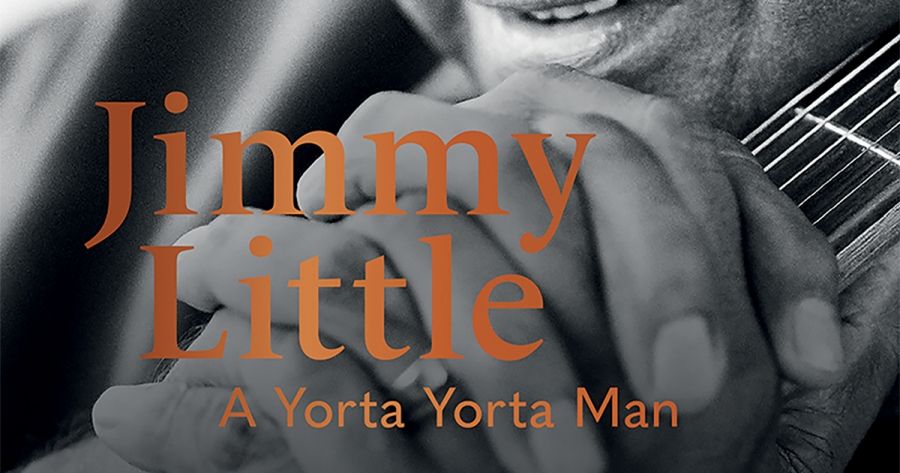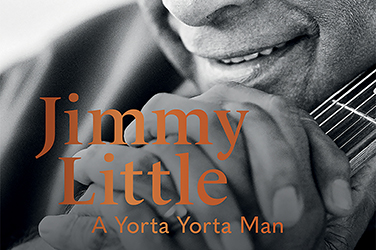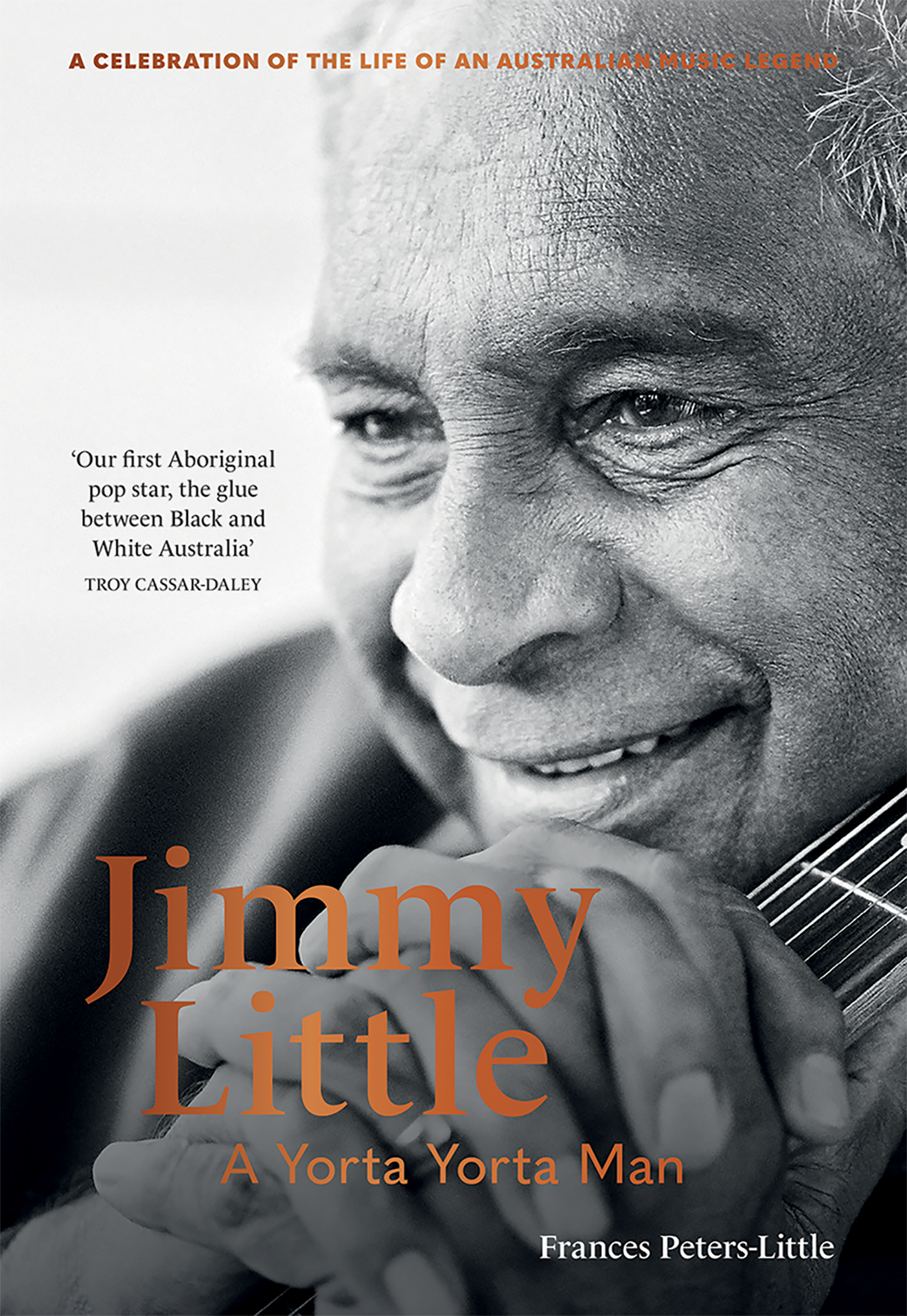
- Free Article: No
- Contents Category: Biography
- Review Article: Yes
- Article Title: The messenger
- Article Subtitle: Jimmy Little’s remarkable second act
- Online Only: No
- Custom Highlight Text:
The remarkable second act of Jimmy Little’s career commenced with the release of Messenger in 1999. The album was a selection of atmospheric renditions of classic Australian rock songs. In stark contrast to the reassuring homeliness of his earlier recordings, Little’s reading of them evoked an Australia of vast empty spaces, melancholy, and solitude. Those lucky enough to attend the concerts that followed were struck by his goodwill and by the assured mastery of his performance and the fineness of his voice, which hadn’t deteriorated with age.
- Featured Image (400px * 250px):

- Alt Tag (Featured Image): Philip Morrissey reviews 'Jimmy Little: A Yorta Yorta man' by Frances Peters-Little
- Book 1 Title: Jimmy Little
- Book 1 Subtitle: A Yorta Yorta man
- Book 1 Biblio: Hardie Grant Publishing, $45 hb, 258 pp
- Book 1 Cover Small (400 x 600):

- Book 1 Cover (800 x 1200):

Many of those questions one might have had about the man have now been answered by Little’s daughter Frances Peters-Little with her biography Jimmy Little: A Yorta Yorta man. Peters-Little, an academic, combines detailed research with a self-effacing writing style which complements the modesty of Jimmy’s own narrative.
In any Aboriginal life history, one is liable to encounter the rawest aspects of Australian colonial history. Jimmy Little is no exception. As an infant, Little was carried in his parents’ arms when they walked off Cummeragunja Mission during the Cummeragunja Strike and Walk Off of 1939. At that time, there was the ever-present fear of the Aboriginal Welfare Board and its practice of removing Aboriginal children from their families. An illustration of the human cost of these abductions is provided by Debra Cheetham in her introduction to this biography. Little’s niece, and herself a member of the Stolen Generations, Cheetham reveals that when she was six years old, unbeknown to her, Jimmy, accompanied by Charles Perkins, approached her adoptive mother and asked to take Debra into his own family. This was refused, and Cheetham only learned of this request many years later. Personal relationships were central to Jimmy’s life. His close relationship with his father, who supported his ambitions as a musician, and his enduring marriage to Marj are noteworthy. In the early years of his marriage, he worked manual jobs while he tried to break into the music industry.
The depth of Peters-Little’s research, and her mastery of the material, are evident in her chapter on Little’s involvement in the burgeoning Australian popular music industry of the 1950s and 1960s. Jimmy toured Australia with popstars such as Col Joye and the Joye Boys, Jay Justin, and Judy Stone. At the same time television shows such as Bandstand, Six O’Clock Rock, and The Johnny O’Keefe Show provided exposure for local popstars. Peters-Little identifies the hybrid provenance of ‘Royal Telephone’, Jimmy’s 1964 pop gospel hit, and producer Tommy Tycho’s role in producing a version ‘more commercial and less hymnal’ than the original. While ‘Royal Telephone’ made Little a household name, it also permanently identified him, in the eyes of some, with a pietistic Christianity they saw as alien to Aboriginal culture. But as Jimmy and Peters-Little make clear, his Christianity, infused with Indigenous cultural perspectives, was inclusive and mystical.
By the mid-1990s, Peters-Little writes, Jimmy’s life and career were in a slump. His greatest successes were in the distant past. Australia was a radically different nation from the one that had made ‘Royal Telephone’ a hit. Nationally, there was an official policy of reconciliation, but Australian politics had soured with the election to the Parliament of Pauline Hanson, who had run for office on a platform of little more than white racial grievance. It was an approach from Brendan Gallagher, a young musician/producer with the proposal that they collaborate, that would lead to the album Messenger and the radical change in Little’s life. He received an Aria Award for Best Adult Contemporary Album in 1999, and other awards and honours followed. He was appointed an Officer of the Order of Australia, awarded three honorary doctorates, received a Red Ochre Award from the Australia Council for lifetime achievement, named a Living National Treasure, and chosen as New South Wales Senior Citizen of the year.
In his final years, Little lived with kidney disease even as he continued to perform. Judy Stone described him as ‘a still presence when he went on stage … who single-handedly quietened the audiences’.
In one of the last performances of Jimmy’s that I witnessed, he followed a very loud and large rock band with his three-piece band and immediately took command of the stage and drew the audience into his complex and rich world. His daughter writes, ‘In his own words he was not a political activist, nor a leader, and he never claimed to be a cultural elder, but in spite of himself he became all three.’
Correction
An earlier version of this review incorrectly referred to Col Joye and the Joy Boys as Col Joy and the Joy Boys.


Comments powered by CComment